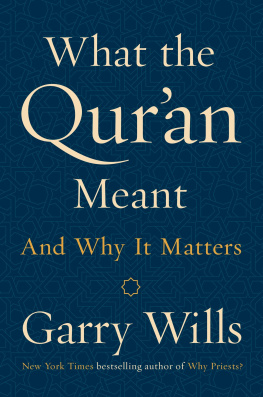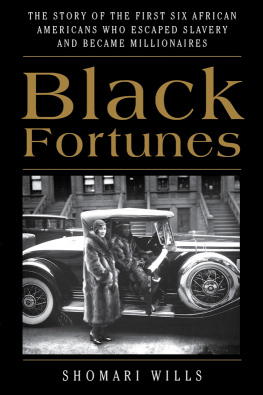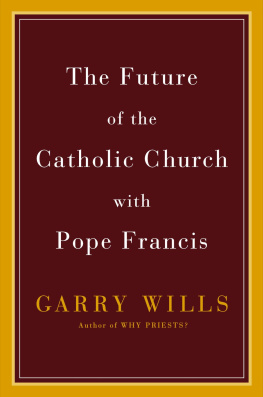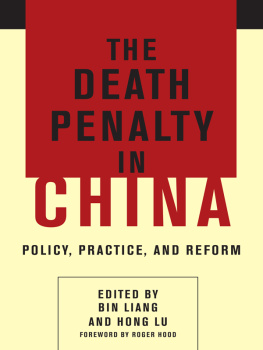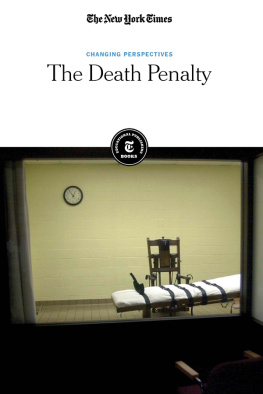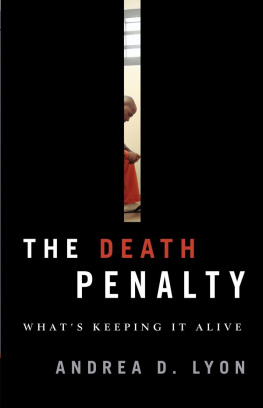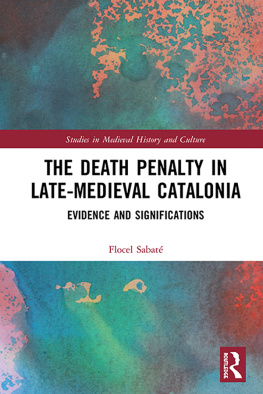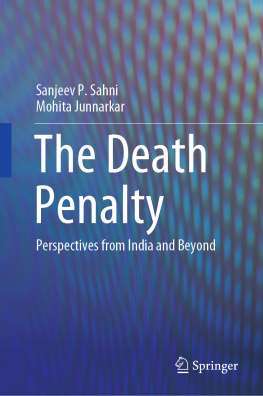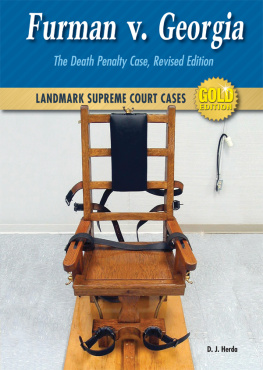Wills - Killing times : the temporal technology of the death penalty
Here you can read online Wills - Killing times : the temporal technology of the death penalty full text of the book (entire story) in english for free. Download pdf and epub, get meaning, cover and reviews about this ebook. City: United States., year: 2019, publisher: Fordham University Press, genre: Romance novel. Description of the work, (preface) as well as reviews are available. Best literature library LitArk.com created for fans of good reading and offers a wide selection of genres:
Romance novel
Science fiction
Adventure
Detective
Science
History
Home and family
Prose
Art
Politics
Computer
Non-fiction
Religion
Business
Children
Humor
Choose a favorite category and find really read worthwhile books. Enjoy immersion in the world of imagination, feel the emotions of the characters or learn something new for yourself, make an fascinating discovery.

- Book:Killing times : the temporal technology of the death penalty
- Author:
- Publisher:Fordham University Press
- Genre:
- Year:2019
- City:United States.
- Rating:5 / 5
- Favourites:Add to favourites
- Your mark:
- 100
- 1
- 2
- 3
- 4
- 5
Killing times : the temporal technology of the death penalty: summary, description and annotation
We offer to read an annotation, description, summary or preface (depends on what the author of the book "Killing times : the temporal technology of the death penalty" wrote himself). If you haven't found the necessary information about the book — write in the comments, we will try to find it.
Killing times : the temporal technology of the death penalty — read online for free the complete book (whole text) full work
Below is the text of the book, divided by pages. System saving the place of the last page read, allows you to conveniently read the book "Killing times : the temporal technology of the death penalty" online for free, without having to search again every time where you left off. Put a bookmark, and you can go to the page where you finished reading at any time.
Font size:
Interval:
Bookmark:
K ILLING T IMES
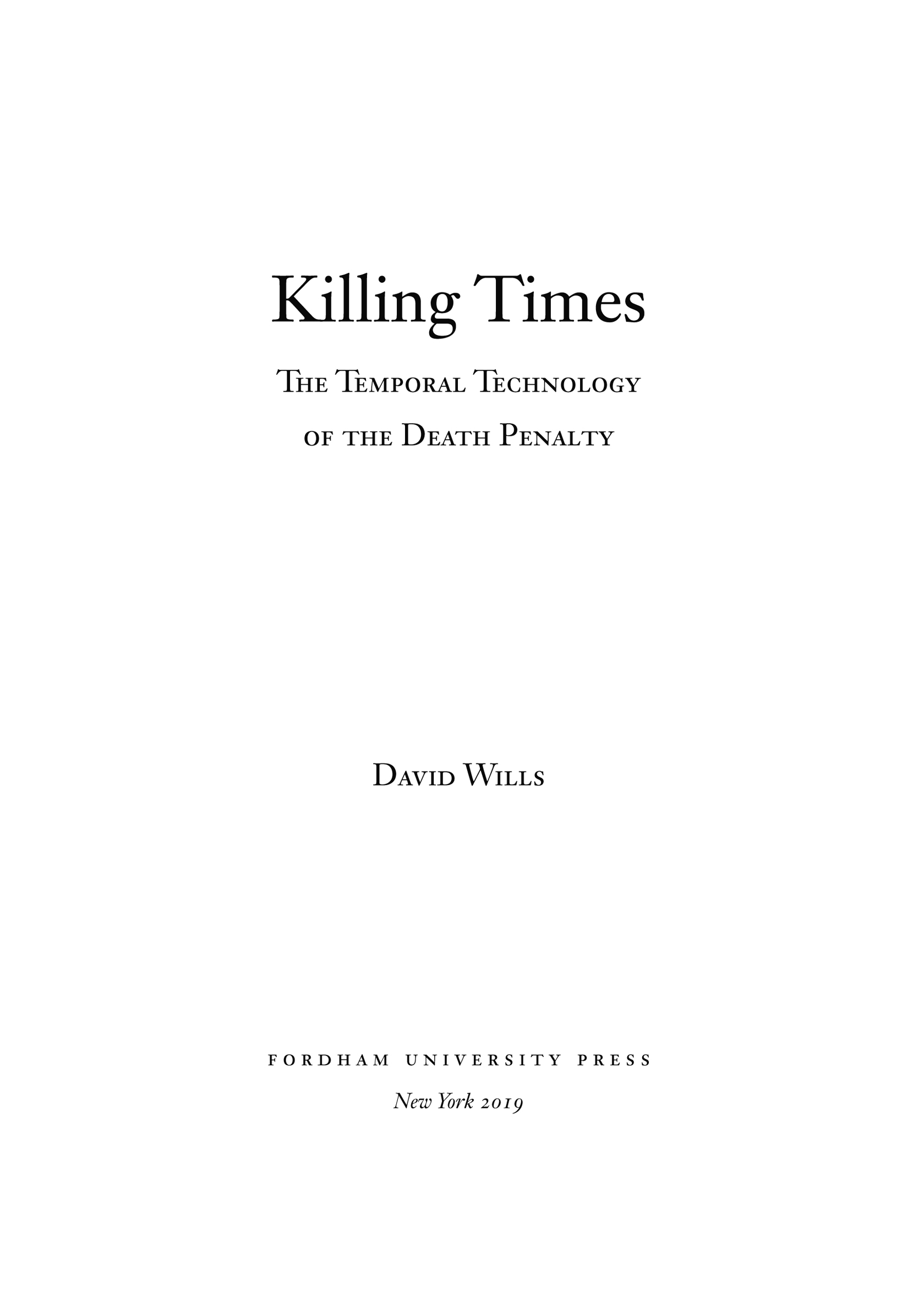
Fordham University Press gratefully acknowledges financial assistance and support provided for the publication of this book by Brown University.
Copyright 2019 Fordham University Press
All rights reserved. No part of this publication may be reproduced, stored in a retrieval system, or transmitted in any form or by any meanselectronic, mechanical, photocopy, recording, or any otherexcept for brief quotations in printed reviews, without the prior permission of the publisher.
Fordham University Press has no responsibility for the persistence or accuracy of URLs for external or third-party Internet websites referred to in this publication and does not guarantee that any content on such websites is, or will remain, accurate or appropriate.
Fordham University Press also publishes its books in a variety of electronic formats. Some content that appears in print may not be available in electronic books.
Visit us online at www.fordhampress.com.
Library of Congress Cataloging-in-Publication Data
Names: Wills, David, 1953 author.
Title: Killing times : the temporal technology of the death penalty / David Wills.
Description: First edition. | New York, NY : Fordham University Press, 2019. | Includes bibliographical references and index.
Identifiers: LCCN 2018059019 | ISBN 9780823283521 (cloth : alk. paper) | ISBN 9780823283491 (pbk. : alk. paper)
Subjects: LCSH: Executions and executionersUnited States. | Capital punishmentUnited States.
Classification: LCC HV8699.U5 W53 2019 | DDC 364.66028/4dc23
LC record available at https://lccn.loc.gov/2018059019
Printed in the United States of America
21201954321
First edition
In fondest memory of Helen Tartar (19512014)
CONTENTS
If it were done when tis done, then twere well it were done quickly
Shakespeare, Macbeth
I happen to begin writing this introduction on April 29, 2015. It is an everyday on planet Earth. From Indonesia comes news of eight convicted drug smugglerstwo Australians, a Brazilian, an Indonesian, and four Nigeriansexecuted by firing squad. In the United States, the defense continues its argument against a death sentence for Boston marathon bomber Dzhokhar Tsarnaev, in response to the federal Justice Departments impassioned plea for just such a sentence. In Washington, as the Supreme Court hears arguments for and against Oklahomas single-drug (midazolam) protocol in Glossip v. Gross , Justice Sonia Sotomayor opines that death by potassium chloride is akin to being burned at the stake. Although it is not in the days papersprobably because no Westerners are being executedone imagines the Islamic State continuing to perform executions in the territories it occupies (ten days ago, a video was released purporting to show fifteen Ethiopians subjected to such a penalty in Libya). And in Hungary, Prime Minister Viktor Orbn threatens to reinstate capital punishment in spite of the European Community ban to which his country has so far subscribed. Clearly, from West to East and back, the death penalty is very much with us.
By the time this book is published, many months, even years, will have passed since the date I just marked. The events recounted may or may not have attained a different significance. But two things seem certain: First, those who read these words will have continued to live and to advance toward a death whose precise timing remains, in by far the overwhelming number of cases, unforeseen; and second, capital punishment will in one way or another, in one place or another, still be with us, inflicting on what is relatively a very limited number of humans the penalty of having their days precisely numbered.
Many years ago I told myself, and others, that I would never become a naturalized American until my adopted country abolished the death penalty. I told myself that especially during the years I lived in Louisiana, where the fact of the death penalty was and remains difficult to avoid, where executions took place regularly, where Angola Prison stands as a monument to some of the most egregious practices of the American punishment archipelago. While in Louisiana, I was for some time active in an Amnesty International chapter that divided its activities between intercessions on behalf of a persecuted Tunisian mathematics professor, of exactly my age, named Moncef Ben Salemwith whom I conversed by phone a few times in an effort to offer some moral concern and solidarityand support for the Louisiana Coalition to Abolish the Death Penalty, whose most noteworthy member was Sister Helen Prejean.
Later I moved to New York, where in spite of George Patakis successful reintroduction of capital punishment legislation in 1995, no execution was ever carried out before the law was held to be unconstitutional. I then went on to Rhode Island, which has not executed anyone since 1845, and which became in 1984 the first state to abolish the death penalty in the post-1976 period. One might say I have been lulled into a sense of security regarding capital punishment.
More than twenty years have passed since my mildly activist days in Louisiana, and about ten years ago a different logic led me to become an American citizen nevertheless. In 2011, following the Tunisian Spring, Moncef Ben Salems twenty-four years of imprisonment, harassment, and collective punishment came to an end, and he was appointed Tunisias Minister of Higher Education. I wrote to congratulate him, but we never spoke again. He died in March 2015, still having my age. Abolition did not follow on the heels of democratization in Tunisia, as has consistently been the case in recent historyfrom South Africa to Serbiaand the countrys new constitution has retained the death penalty. Nevertheless, Amnesty International defines Tunisia as abolitionist in practice and there have been no executions since 1991, which includes most of the period of the pre-Spring repressive government of President Ben Ali. In December 2014, Tunisia joined 117 countries voting in favor of the UN global moratorium on the use of the death penalty.
Back here, though, there is still the death penalty. As of 2017 the United States remained one of 56 retentionist countries, 142 others being abolitionist in law or practice for all, or ordinary crimes. Yet, nineteen states within the United States have abolished capital punishment, and four more have gubernatorial moratoria that currently put the practice on hold. Renewed expressions of opinion concerning its unconstitutionality have been followed by more nuanced positions taken by outgoing Democrat President Obama and candidates hoping to succeed him, Hillary Clinton and Bernie Sanders. But there is still the death penalty, and an incumbent president, Donald Trump, who strongly supports it, continuing the tradition of every incumbent before him.
I record those milestonespunctual moments, the passage of yearssimply to emphasize my interest, in this book, in the complex temporality of the death penalty: the slow time of judicial processes, the presumed instantaneity of the end of life; and most important, the states imposition of a precise timetable for ending a human life, coupled in the American context with an often decades-long limbo on death row. In imposing and enforcing a precise moment of death, capital punishment has to be conceived of differently from suicide, euthanasia, murder, and even genocide. A person may decide to end his or her life on a particular date, perhaps even at a precise time on the clock, but that timing will be of his or her own choosing and executed according to his or her program; a decisionjudicial or otherwisemay be made to remove the life-support system of someone who is comatose, but that person will not have been informed of such a decision in a courtroom by the machinery of state; a murder may be minutely planned and timed, but the killing will always retain for its victim something of the structure of an accident; and although genocide may be enacted by a state, andas in the paradigm of the Nazi Holocaustalthough it requires a type of precise industrial program, something about its very wholesale aspect, and necessary haste, prevents it from functioning as the same imposition and repetition of a judicial timetable as the death penalty. Of course, one could find or imagine cases that fall between those different categories of dying, which would raise the question of whether they should more accurately be called one or the other, whether murder or suicide (e.g., a murder-suicide pact), murder or euthanasia, murder or genocide. And indeed, since capital punishment inevitably raises the question of its judiciality, it risks hovering between murder and death penalty, or, as discussed in , can overlap with suicide.
Next pageFont size:
Interval:
Bookmark:
Similar books «Killing times : the temporal technology of the death penalty»
Look at similar books to Killing times : the temporal technology of the death penalty. We have selected literature similar in name and meaning in the hope of providing readers with more options to find new, interesting, not yet read works.
Discussion, reviews of the book Killing times : the temporal technology of the death penalty and just readers' own opinions. Leave your comments, write what you think about the work, its meaning or the main characters. Specify what exactly you liked and what you didn't like, and why you think so.

